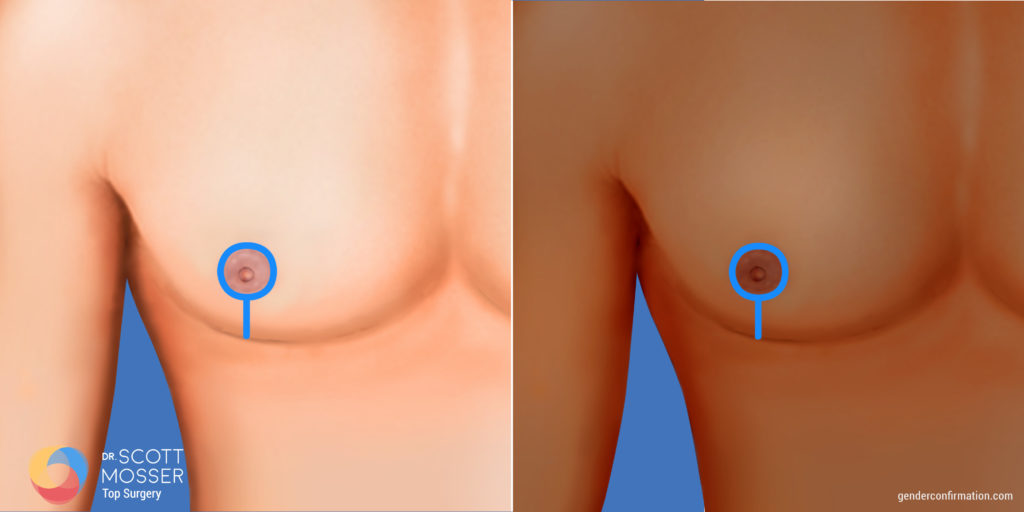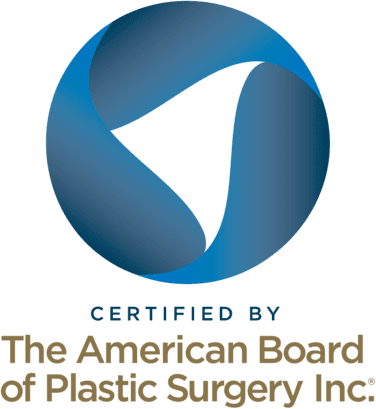Lollipop Top Surgery
The lollipop incision surgery technique is an infrequently used procedure for chest reconstruction top surgery. It is similar to the periaeolar insicion in that it uses the same technique with an additional vertical insicion below the areola to remove excess skin. This procedure can be performed on a narrow subset of patients who have a bit of extra skin tissue, who have no need to lift the position of the nipple, and who might otherwise not be candidates for a periareolar incision.
How the Lollipop Incision is Performed
In this procedure, many steps are similar to the periareolar incision. The areola is resized and an outer circle is designed to accommodate some of the skin excision. The lower portion of an ellipse (oval) is designed in the lower chest area to reduce even more skin. Then, much like in a periareolar incision procedure, the outermost layer of skin is removed and then the surgeon makes a deeper incision through which all chest tissue is removed.
Then the outer circle is brought down closer to the inner circle of the areola and the edges of the wedge of skin in the lower portion of the chest is closed, leaving the vertical incision. As with most other top surgeries, drains are typically placed for a one week following a lollipop incision surgery.
Potential Downsides and Upsides to the Lollipop Incision
Some people may perceive the vertical incision as a negative part of this procedure. However, others believe this shorter incision is preferable to a double incision procedure, so the lollipop incision might be the only option if the patient is not a candidate for a periareolar incision. Ultimately, as with all other surgeries, the appropriateness of a particular choice involves a thorough discussion with your surgeon to decide which procedure is best for you.
Request a Free Surgical Consultation Today.
All virtual and in-person consultations with our board-certified surgeons are free. Once you fill out this form, our patient care team will reach out and guide you through every step to get to surgery.





